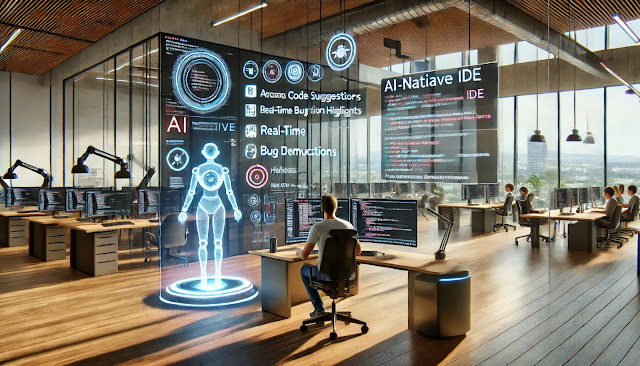When talking to customers about AI in software development: “What will be the ROI?” remains a question that always pops up. On the surface, this seems like a valid question. After all, organizations need to justify investments in new technologies. But when it comes to AI in software development, I think this question is misguided and distracts from AI's transformative potential in modern software engineering.
The proof-of-concept disease
Many organizations are stuck in a cycle of proof of concept (PoC) projects aimed at demonstrating the value of AI in software development. They allocate resources to measure AI’s impact on developer productivity or code quality, hoping to calculate some tangible ROI.
But here’s my opinion:
We’re way past the point where AI’s usefulness in software development is debatable.
Tools like GitHub Copilot, AI-powered testing frameworks, and automated code reviews have already shown that AI can enhance the software development lifecycle (SDLC).
Instead of constantly justifying AI’s value, I think that organizations should focus on how to operationalize AI in software development. The real question isn’t “What’s the ROI?” but rather “How can we make AI an integral part of our SDLC?”
Sidenote: Measuring developer productivity
This question about the ROI of AI is closely related to a question that exists way longer; how can measure developer productivity? Lines of code? Too simplistic and misleading. Number of features delivered? Often influenced by external factors like scope changes. Developer productivity is notoriously hard to quantify, and attempting to measure it in the context of AI often leads to arbitrary metrics that don’t reflect real-world outcomes.
Moreover, focusing solely on productivity misses the bigger picture. AI tools don’t just make developers faster; they make them better. By offloading repetitive tasks, AI enables developers to focus on high-value activities like designing robust architectures or solving complex problems. This qualitative improvement is hard to measure but crucial for long-term success.
Embracing an AI-Native developer mindset
What’s needed instead is an AI-native mindset. In this paradigm, AI isn’t an add-on or an experiment; it’s a foundational element of software development. AI becomes an integrated part of every phase of the SDLC, from requirements gathering and coding to testing, deployment, and monitoring. This integration doesn’t just improve efficiency; it fundamentally changes how software is built, shifting the focus from manual effort to intelligent automation and collaboration.
Imagine this: an AI-native developer you start your day by reviewing a backlog of tasks, but instead of manually sifting through tickets, an AI planning assistant has already prioritized them based on dependencies, deadlines, and team capacity. You select a task, and your AI coding assistant already generated a first implementation of a solution for the task at hand. Your AI-powered IDE suggests areas to review further, warns of potential bugs, and recommends next steps for the task at hand.
When you hit a roadblock, your AI pair programmer assistant provides solutions based on not only examples from open-source repositories but also from previous projects inside your organization and best practices. Midway through, your pair programmer AI assistant identifies an edge case the developer hadn’t considered and proposes a test case to handle it.
By lunchtime, you are ready to commit your changes. Automated AI tools validate the code, run exhaustive tests, and even simulate how the new functionality performs under load. Bugs found? The AI assistant suggests fixes and, in some cases, applies them automatically.
In the afternoon, you collaborate with a colleague to brainstorm a new feature. Your AI assistants takes notes, organizes ideas, and generates a prototype for review. By the end of the day, the AI tools have not only streamlined repetitive tasks but also enhanced the creative and collaborative aspects of development, allowing you to focus on innovation and problem-solving.
Sounds like something for a far away future? I think that by embracing an AI-Native developer mindset, most of the things I described above are already possible today. The challenge is that the full experience is not (yet) streamlined.
A call to action
I welcome everyone to stop questioning AI’s value in software development. Organizations should stop wasting time and money on PoCs designed to justify AI adoption. Instead, they should embrace AI as an essential component of modern software engineering. This means investing in training developers to work with AI, integrating AI tools into existing workflows, and fostering a culture that views AI as a foundational element rather than a novelty.
Asking about the ROI of AI in software development is like asking about the ROI of computers in the workplace or the Internet for businesses. It’s the wrong question because it assumes AI is optional.
The real question is: how can we fully leverage AI to transform how we build software?
The sooner we move past ROI and toward integration, the sooner we’ll unlock AI’s full potential in software development.
More information
The SPACE of Developer Productivity: There's more to it than you think - Microsoft Research
